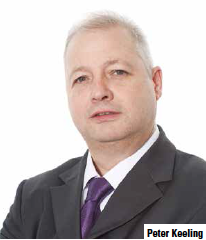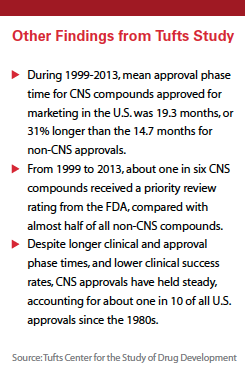Sales, marketing, And R&D?Trends affecting the healthcare industry
Pharma Companies Not Ready for Personalized Medicine
Trending Now: Janssen, Roche, and Novartis are disrupters in personalized medicine and ?have demonstrated the ability to competitively reshape therapeutic areas.
 Leading pharmaceutical companies aren’t quite ready for the personalized medicine business model, finds a recent study from Diaceutics. Companies fall into two clear groups: those starting to build the internal and external capabilities for a personalized medicine predominant future and those still on a learning curve. Within the 12 companies analyzed only three — Janssen, Novartis, and Roche — have made the necessary internal and external investments currently to lead the PM field.
Leading pharmaceutical companies aren’t quite ready for the personalized medicine business model, finds a recent study from Diaceutics. Companies fall into two clear groups: those starting to build the internal and external capabilities for a personalized medicine predominant future and those still on a learning curve. Within the 12 companies analyzed only three — Janssen, Novartis, and Roche — have made the necessary internal and external investments currently to lead the PM field.
The report finds that although only 19% of total sales revenue from these leading companies currently comes from therapies with biomarkers prominently in the label, their share of PM drugs in their Phase III pipelines have advanced from 46% to 74%.
“Since our first Readiness Report in 2010 we can see that most companies have improved their organizational readiness, but not all have advanced their commercial readiness or created the market infrastructure to capitalize on targeted therapy launches," says Peter Keeling, Diaceutics CEO. “This seems at odds with the PM share within their phase three pipelines and suggests that the R&D investments have still not been matched with adequate commercial focus."
For more information, visit diaceutics.com.
CNS Drugs Take Longer to Develop and Have Lower Success Rates
 Drugs that treat central nervous system (CNS) diseases take more than a year longer to develop and are less than half as likely to obtain marketing approval than other drugs, according to a newly completed study by the Tufts Center for the Study of Drug Development.
Drugs that treat central nervous system (CNS) diseases take more than a year longer to develop and are less than half as likely to obtain marketing approval than other drugs, according to a newly completed study by the Tufts Center for the Study of Drug Development.
Mean clinical development time for CNS drugs approved for marketing in the United States from 1999 through 2013 was 12.8 months, or 18% longer than for non-CNS compounds, according to Tufts CSDD. In addition, the overall clinical approval success rate (share of compounds entering clinical testing that obtain marketing approval) for CNS compounds first tested in human subjects from 1995 to 2007 (and followed through 2013) was 6.2%, or less than half the 13.3% rate for non-CNS drugs.

“CNS drugs are more challenging to develop than other medicines, because the conditions they aim to treat are typically chronic and complex, and clinical endpoints are often difficult to measure," says Joseph DiMasi, director of economic analysis at Tufts CSDD and author of the study.
For more information, visit csdd.tufts.edu.
Drugstore Chains Drive ?Retail Clinic Growth
The number of retail health clinics in the United States is growing steadily, thanks to drug store chains, according to Kalorama Information.
In recent years, as a result of the economic downturn, retail clinic growth had been at a standstill, but 2013-14 was a year of opportunities, as the number of retail clinics reached almost 1,600, according to the healthcare market researcher’s report. Kalorama found that more people are using retail clinics — though not a majority of the U.S. population yet — and that a high percentage of visitors were satisfied with the experience.
Visitors skew older, with a high percentage over the age of 40, and the most common reason for a visit is to receive a vaccination.
For more information, visit kaloramainformation.com.
A study of more than two-dozen large and small pharmaceutical companies found that 18% have used pay-for-delay tactics as part of their counter-generics strategies. Most of the companies actively employing the strategy, however, are smaller drug manufacturers, according to Cutting Edge Information.
Small companies comprise almost all of those reporting that they plan to use pay for delay deals in the next three years as well.
“The large percentage of surveyed companies report that they do not use this strategy may be misleading, however," says Jacob Presson, research analyst at Cutting Edge Information. “Surveyed companies considering this option’s use in the next three years may have been swayed to not report it as a certainty due to current public opinion, making this strategy seem less employed than it truly might be."
For more information, visit cuttingedgeinfo.com.
The healthcare cloud market in the United States and Europe is in a growth phase, with average penetration rates expected to increase by 10% to 30% by the end of the decade. New analysis from Frost & Sullivan finds that the European market earned revenue of $390.5 million in 2013 and estimates this to reach $1,275.7 million in 2020. The U.S. market generated $903.1 million in 2013 and is expected to hit $3,541.2 million in 2020.
“Govern ment initiatives to optimize healthcare information exchanges have underlined the importance of synchronized real-time data management and personalized healthcare delivery, lending impetus to the healthcare cloud market in the United States and Europe," says Frost & Sullivan Healthcare Research Analyst Shruthi Parakkal.
ment initiatives to optimize healthcare information exchanges have underlined the importance of synchronized real-time data management and personalized healthcare delivery, lending impetus to the healthcare cloud market in the United States and Europe," says Frost & Sullivan Healthcare Research Analyst Shruthi Parakkal.
For more information, visit frost.com.
Sidebar:
Other Findings from Tufts Study
During 1999-2013, mean approval phase time for CNS compounds approved for marketing in the U.S. was 19.3 months, or 31% longer than the 14.7 months for non-CNS approvals.
From 1999 to 2013, about one in six CNS compounds received a priority review rating from the FDA, compared with almost half of all non-CNS compounds.
Despite longer clinical and approval phase times, and lower clinical success rates, CNS approvals have held steady, accounting for about one in 10 of all U.S. approvals since the 1980s.
Source: Tufts Center for the Study of Drug Development
Therapeutic Trax
Cancer
The entry of 13 novel therapies into the non-small-cell lung cancer (NSCLC) market will drive the market’s growth from $5.2 billion in 2013 to $8.5 billion in 2023. Notably, the NSCLC market will grow despite the generic/biosimilar erosion of key branded current therapies, including Lilly’s Alimta, Genentech/Roche/Astellas/Chugai’s Tarceva and Genentech/Roche/Chugai’s Avastin.
Source: Decision Resources
The market for renal cell carcinoma -therapies will grow to $2.5 billion by 2023, despite the generic erosion of Pfizer’s Sutent, GlaxoSmithKline’s Votrient, Pfizer’s Inlyta, Bayer /Onyx Pharmaceuticals’ Nexavar, Novartis’s Afinitor, Pfizer’s Torisel. Market growth will be fueled by the launch of Bristol-Myers Squibb/Ono Pharmaceutical’s Opdivo and Yervoy, two immune checkpoint inhibitors.
Source: Decision Resources
The global melanoma therapeutics market was valued at $1.3 billion in 2013 and will expand at a CAGR of 15.4% to reach $3.6 billion by 2020. The majority of this growth will occur in the U.S., where the market value will rise from about $1 billion in 2013 to $2.6 billion by the end of the forecast period.
Source: GBI Research
The global non-Hodgkin’s lymphoma treatment market will increase in value from $5.6 billion in 2013 to $9.2 billion by 2020, representing a CAGR of 7.4%. High unmet clinical needs and the launch of promising drugs will be key global drivers, although the patent expiry of blockbuster Rituxan in the EU will hinder market growth in this region.
Source: GBI Research
CNS
The Parkinson’s disease (PD) pharmacotherapy market will grow 5% annually from $2.3 billion in 2013 to $3.8 billion in 2023. This growth will be fueled by the launch of several therapies, including new molecular entities in established drug classes, reformulations of time-tested products, and novel first-in-class entrants that target a range of clinically important subpopulations facing diverse, unmet needs.
Source: Decision Resources
The attention-deficit hyperactivity disorder (ADHD) therapeutics market value will rise to $9.9 billion by 2020, with broadening diagnostic criteria a key driver of growth. This increase, which represents a CAGR of 5.3% and relates to eight major markets (the United States, the United Kingdom, France, Germany, Spain, Italy, Japan, and Canada), will occur fastest in Japan, due to its high ADHD prevalence. Despite the stigma attached to mental health conditions, this country will witness a more impressive attention-deficit hyperactivity treatment market CAGR of 15.7%.
Source: GBI Research
Dermatology
The psoriasis market will experience robust growth over the next decade as sales increase from $6.6 billion in 2013 to $10.7 billion in 2023 in the United States, France, Germany, Italy, Spain, the United Kingdom, and Japan. The continued uptake of Janssen’s interleukin (IL)-12/23 inhibitor Stelara in earlier lines of therapy and the entry of therapies with novel mechanisms of action will drive sales growth. Stelara is forecast to achieve major-market sales of about $2.4 billion in 2023, representing almost 22% of total psoriasis sales.
Source: Decision Resources
Gastrointestinal
The ulcerative colitis (UC) market will grow over the next decade from $2.7 billion in 2013 to $4.2 billion in 2023 in the United States, France, Germany, Italy, Spain, the United Kingdom, and Japan. Expanded use of tumor necrosis factor (TNF)-alpha inhibitors for maintenance and uptake of emerging therapies as alternatives for the anti-TNFs will be the primary drivers of growth during this period. Sales of biologics will contribute about $2.3 billion to the UC market in 2023.
Source: Decision Resources
The launches of Alba/Teva’s larazotide acetate and Alvine/AbbVie’s latiglutenase for treating celiac disease could drive sales in the US and five major European markets (Germany, France, Spain, Italy, and the United Kingdom) to reach about $551.1 million by 2023.
Source: GlobalData
Pain
The acute pain market will grow minimally from $12.7 billion in 2013 to $13.3 billion in 2023 across the major pharmaceutical markets (United States, France, Germany, Italy, Spain, the United Kingdom, and Japan), representing an annual growth rate of less than 0.5%. Through 2018, market growth, experts report that the increase will be attributable to a growing patient population and continued uptake of several branded pain therapies — most notably Mallinckrodt’s Ofirmev and Pacira’s Exparel in the United States — but will be tempered by generic erosion of several sales-leading pain therapies, such as Celebrex/Celecox, which is comarketed by Pfizer and Astellas.
Source: Decision Resources


















